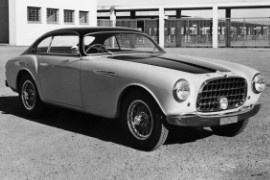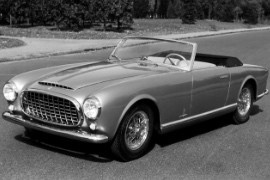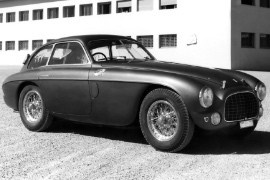
FERRARI 212
Generations Timeline, Specs and Pictures

The Ferrari 212 were built between late 1950 and 1953.
It was built on two main directions: the Inter and the Export. While the Inter was the road-going version, most of the Export was racing models.
After Enzo Ferrari left the Alfa Romeo factory and started its own company, he decided to built cars differently. The 212 was based on the previous model, the 166. The Inter was the most successful of the early production cars built by Ferrari. It had a variety of body styles, as berlinetta, cabriolet, and coupe versions. The 212 started the cooperation with Pininfarina design studio and created a long-term relationship between the two Italian companies.
It all started with a chassis and few design cues that had to be respected. But the coachbuilders had enough freedom to express their creativity. Companies like Ghia, Ghia Aigle, Pininfarina, Stabilimenti Farina, Touring, Vignale or the British company Abbott built few vehicles. Not all the Export vehicles were used for racing. Some were used as road vehicles, proving the dual-purpose nature of the Ferrari vehicles.
The 212 Inter featured a V12 engine based on the original Colombo design, but with different bore and stroke and a 2.6-liter displacement and a single twin-choke unit carburetor, but a three carburetor arrangement available as an option.

After Enzo Ferrari left Alfa Romeo due to a disagreement with the Spanish head-engineer and started its own company, he knew he will have to build vehicles for the market.
But he didn’t build just ordinary cars. He built exquisite cars and one of the first was the 1951 Ferrari 212.
He started with an older concept: the Ferrari did the base platform and built the bodywork with different contractors: Vignale, Carozzeria Touring, Ghia, Ghia-Aigle and, most important, with Pininfarina. The 212 represents the beginning o a beautiful friendship between the two companies, which lasts even today.
Ferrari built only 82 of the 212 and some of them were special. One was given as a present to Henry Ford II and it was really special. It has a longer wheelbase, a 2.7-liter racing engine instead of the regular 2.6-liter unit, and the bodywork was a barchetta. It was open-top, no roof-top and no door handles. This one-off 212 was styled by Carozzeria Touring as a light version, named “Superleggera”.
The convertible versions were built by Pininfarina and the other coupe versions were built by Vignale and Ghia. It was available as a two-door coupe or a two-door fastback and with left or right-hand drive, depending on the country where it was ordered. To ease up the process, the dashboard was a flat metal sheet with two big holes in the middle where the speedometer and the rev-counter were installed.

In 1951 Ferrari was still building its empire as a motorsport icon, but the customers already knew its products on the race tracks.
After its customers raced the first cars, they started to use them on weekend races, but the cars were too heavy. Then, Enzo Ferrari began to offer vehicles made especially for racing but still able to transport their owners in comfort. The Ferrari 212 Export was just that kind of car, built on the same chassis as the 212 Inter but with some magic tweaks that made it special.
The 212 Export was available as a coupe or as a roadster. While the latter was more of a race-car, the Export was a multipurpose vehicle. It was able to storm a race-track and be usable when driving in the rain. Its torque and power allowed it to be driven in the top (fifth) gear from 10 mph (16 kph) to over 90 mph (145 kph). Ferrari built the Export with aluminum body panels to make the car lighter.
The car’s sloped back allowed a smoother airflow and less wind resistance. That design led to another advantage for the interior, where the carmaker could have installed two bucket seats at the front and a shelf in the rear for luggage.
The 212 Export featured a V12 engine based on the original Colombo design, but with a different bore and stroke that led to a 2.6-liter displacement and three carburetors. While it was an excellent solution for racing, it wasn’t that useful on regular streets. That’s why Ferrari offered an option for a different intake manifold fit for a single twin-choke carburetor that provided enough power but a better fuel-efficiency.























































